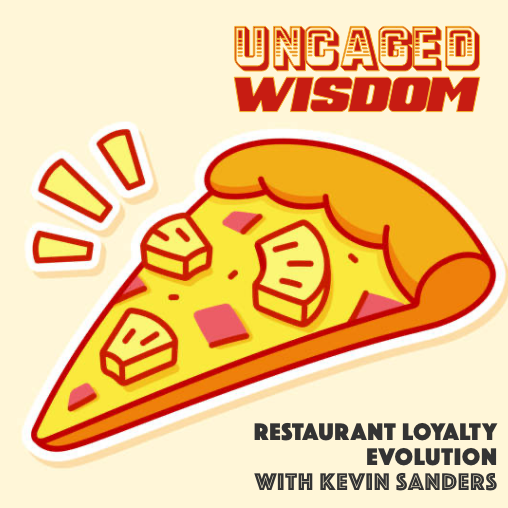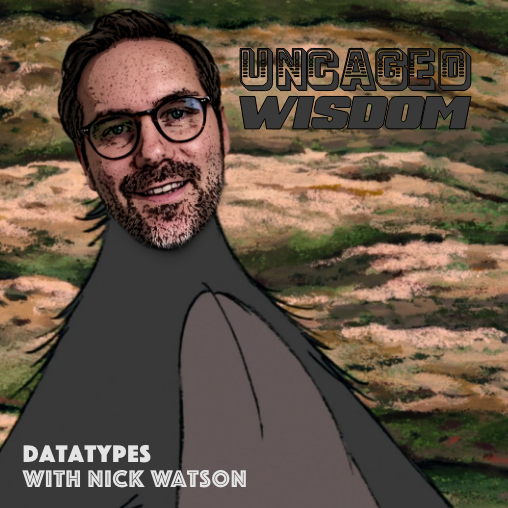A Deep Dive Into The Complexity Of Financial Modeling For Loyalty Programs w/ Jay Weinberg
- 0.5
- 1
- 1.25
- 1.5
- 1.75
- 2
Speaker 1: (singing). Uncaged Wisdom, Cheetah Digital's podcast for modern marketing.
Julian: So Jay, welcome back. We will be concluding our trilogy of trilogies, our look at financial modeling in three parts. For anyone who is listening to this over a period of time, episode one is looking at the importance of financial modeling, and Jay covers why it should be at the heart of your considerations, be you're coming up with a new loyalty program, or be you're reevaluating and evolving your current one. Part two was looking at the individual elements behind financial modeling, how we can really board out into the most important parts of your consideration, and Jay gave us four brilliant areas to consider. And to round us out, Jay, we're going to talk about the complexity of financial models and actually look a little bit beyond them in this third and final episode. So let's start off by considering the complexity of financial models. So what do we need to bring in at this point that we haven't thought about before, which is important, but again, if you don't approach it in the right way, can make your head hurt?
Jay: Yeah. Well, these make your head hurt regardless, I think. But we've talked about why you do financial modeling, what are some of the use cases in planning, and then we've really talked about the basics, the input parameters, the outputs of a financial model, and the valuation criteria in what you're looking for, so those are really the basics. More the advanced kinds of things that you're going to find when you're trying to do financial modeling is that some of these can be very simple, some of these can be vastly complex. It's really based on the use case you have and the different kinds of needs for the program. Typically, I'd say there's five things that determine the complexity of a financial model. First would be factors such as the program type or tier structure. So from a program- type standpoint, is this going to be a points- based rewards program? Is it going to be some kind of a spend and get program, if you spend a certain amount or buy a certain number of times, you get something, but there's no actual currency involved? Is it just a soft benefits program? Is there really no hard value exchange benefit and it's just simply, you're getting soft benefit- type treatments? Is it more of a surprise and delight kind of a program where there's no specified benefits of what you're getting, but you do get periodic discounts or rewards or prizes based on the value that you're bringing to the business? The other part I mentioned was a tier structure, and this is where financial models can get a little complex because a tier is a different kind of level of customer that can be an announced tier or can be private and really not announced, but based on certain behaviors, you can provide certain benefits. And now, of course, the typical things that you'd see in rewards programs would be the gold, silver, and bronze, or the bronze, silver, gold, and platinum tiers. Not all, but most programs have anywhere from two to five, even more or less, tiers in their program. And using those in a financial model can be a little bit tricky. One of the tips that I like to use when it comes to how do you incorporate tiers, is using what I call a cohort matrix, and it allows you to show your work, so for example, if you want to do a program, that's, say... If you want to show your financial model 36 months out, you would have a column for each month, and then rose, going down, would be for each tier and how those people would be interacting with your program, each tier. So it's a very blatant way to show the model, but I like it because it allows you to really understand your methodology as well as when you provide this model to your client or to even to any of your colleagues. It really shows what's going on inside your head. It really gives you the ability to show that work. It also allows you to incorporate more seasonality because if you are looking at, say, January, February, March, April, and so forth, you can put in different parameters and different assumptions based on seasonality that you couldn't do if you were doing just more of an overall formula. So what that allows you to do from a tiering standpoint, it allows you to look at each tier and the behavior of each tier for each month of the program, so again, very granular. And I like to do it in cohorts, so for the first month of the program, here's how many people are going to enroll, here's the behavior that they're going to exhibit, and then how many people are going to jump into the next tier and into the tier after that? Based on those numbers, you can figure it out, and then you can include those people in the next tier for the next month and so forth. And then there's also, to add more complexity to it, not to scare anybody off, is people going back a tier because typical programs, you have to continue to maintain that spending threshold, or you'll migrate down in different tiers. So this cohort matrix allows you to include all of that in a very visual way.
Julian: When you're dealing with people and brands, trying to work that out, do you have a baby step program to walk them through it, especially when you're considering you're going, yeah, tier up, tier up, and then maybe tier back? Do you help them simplify it so they can get their head round it, because I'm guessing tiers is enough to make people have tears?
Jay: There's lots of different rationale and reasons behind even having tiers in the first place. We like to have tiers in programs. We think tiers are important because these programs are designed in nature to be very psychological and very motivational. And what tiers allow you to do is give your customers something to look forward to, so they know that if they just do one or two more things, that they can get up to the next tier, which provides them a certain set of benefits. This is one of the main things, where people will provide you incremental spending in order to get to those tiers because you're giving them certain soft benefits. I'll give you one example, is Southwest Airlines, which I'm a loyalty member for Southwest. And if you can get into the A- List, then there's a lot of really good soft benefits that you get. If I can spend a certain amount, I can get into a Companion Pass, which of course, has lots of benefits. And getting to those requires certain behaviors. I can tell you, even as a professional in this business, it motivates me to make sure I take enough flights in order to get to that A- List because I don't want to have to deal with trying to figure out when I need to call up to make sure I reserve my seat and all those other things that being on an A- List... cutting the line when I'm checking in, things like that, that are really important to me. So tiers provide that gamification in the program that's really important to a lot of programs, so we do like to have tier structure involved in a program. But putting that in the financial model, of course, is something that's a little trickier. So I like to try and make sure that we understand what it's going to take to build those tiers, how they should be built, what are the parameters that people need to do, what's the spending that they need to do in order to get into those tiers? And there's certain benchmarks and strategies and philosophies around that.( singing). How should the tier structure be broken down?
Speaker 4: Five.
Jay: First rule of thumb is the 80/20 rule, so you take 80% of your people in tier one and 20% in tier two, and then you take those 20% in tier two and take 20% of those and move those to tier three. Now, of course, starting out in a program, everyone starts in tier one until they start to stratify, and at some point, you're going to see this 80/ 20 rule come into play, typically. Now, there's a lot of different programs that vary from that quite a bit, but that's one example of a tip I would give if you're starting out, thinking about a loyalty program.
Speaker 4: Four.
Jay: Another one beyond that tier structure, the second, I'd say complexity factor would be the use case, so are you building a business case or are you benchmarking success in the kind of a program that you're doing? So what's the use case for your program or for your financial model? Are you just using this to highlight what you're doing right now and where the gaps are, are you trying to build a business case for a loyalty program, or are you building this financial model as a benchmark for your success to look at the actual verse as planned? And based on the kind of a use case you're using this for, is what you would consider how complex you want to create and make this model, how much detail you need to put in there.
Speaker 4: Three.
Jay: A third one would be the required timeframe under which you're analyzing the program. So typically, we like to do three- year financial models, so we'll take the program out from inception to three years to really run it through its paces and get a good understanding of how this program is going to perform. So if it's just a six- month, promotional- type finite program, or is this an ongoing program that maybe they want to see five years out? Based on those parameters, it will dictate what kind of complexity you want to have for the program.
Speaker 4: Two.
Jay: And then fourth, I would say, is whether a single vision is sufficient for the model or you need multiple scenarios. By that, I mean, do you just want to see one model or do you want to see different versions of the model that maybe show you, for example, a more aggressive version, something that's more realistic, and maybe a version that's more conservative? And as you can imagine, those would be driven by your variable parameters that would say, well, okay, if we can only get people to do this minimal amount, then here's what our outcome would be. This would be a conservative model. If we think, realistically, here's what would make sense, a 5% lift here and a 2% lift there and a 10% lift here, then that would give us maybe what we call our medium or intermediate or realistic version. And then, okay, what happens if we really kick butt here? What can we expect? What's this high water mark that we think the program can do? And that would be more of an aggressive version, so you could be creating multiple versions of the model.
Speaker 4: One.
Jay: And then, of course, the last one, I would say, is the number of customer segments that need to be treated uniquely in the model. Everybody does... well, not everybody, but most companies do some kind of a customer segmentation scheme. And we want to look at, are we just looking at various customers or are we looking at basically treating everyone the same from the outset? Those can add complexities to the model. Are we looking at customers maybe who are paying with certain currencies, like a proprietary credit card versus just any open kind of tender amount or tender type for the program? There's lots of different little complexities that come into play.
Speaker 4: Thunderbirds are go.
Julian: Big five to think about there, Jay, in terms of how you spent some time on the tier structure. That's definitely the one, I guess, people really want to get their heads round to start off with. When we're bringing these additional complexities and we're trying to get our heads round them, and you did a great job of defining these five points, when does that happen in the process? Is that quite early on? Is it a secondary conversation you'll be having with them when they're mapping out the other bits?
Jay: One thing to remember, Julian, if we take a step back and think about when we do financial modeling... And let's forget about the use case of just benchmarking where you are right now, of just looking at where you are right now. But if this is for a business case, for example, when does this come into play? It's not done right away. It is not done as one of the first aspects of the program, simply for the reasons that we need to understand what kind of a program we're doing, what's the foundational program type? And that's where the discovery and some of the strategic planning comes into play, and we try to determine, what's the best strategic approach, what kind of a program should you be doing? So once we have all of those elements in place, once we really understand what we want to do, at least foundationally, it doesn't have to be exact, but at least foundationally, we've understood the kind of a program we want to do and we really understand all of our financial parameters around that and our guidelines and borders around it, so how much we can spend on this, and we can do these kinds of benefits, or maybe not these kinds of benefits, or we're completely anti- promotional and no discounting versus, sure, we can do some discounting and some bonusing and things like that. Once we understand what we're working with, that's when the financial model comes into play and when we start to look at how complex we need to make this financial model.
Julian: Jay, I suppose I'll put it out there to you, to just see, is there anything else you wanted to discuss around the complexities?
Jay: I'll give you one tip that has come up many times, that we've been able to solve for, in particular, in a points- based program, so if you have a points- based program and you're giving, let's call it, I don't know, 10 points for every dollar spent, and you understand how many points and you need a... if you get 500 points, you get a$ 5 reward, something that's very common out there. The other factor that comes into play is, what about points for non- transaction- type activities? So what about bonus points? What about double and triple point days, or buy these certain products and get 10 extra points or get 50 extra points or certain number of points, things like that? Rate us, or provide a referral to somebody, or or answer a quiz, or I'm sorry, a survey, or a quiz, or something like that and get bonus points, how do those get incorporated? And to be honest, those are really difficult to incorporate realistically, so there's a difficult way to do it, or a complex way to do it, is to actually try and measure those throughout each point in history and each point in time that you're doing. But overall, what I found to be acceptable for clients, as well as a lot easier to manage, because these are complex enough without getting into these, is to use a bonus points bucket. And by that, I mean, you allot of percentage of points that'll be issued throughout the year to your members. So for example, you may say," We're going to keep an extra 10% of whatever each customer is earning, so we're going to give... Say, each customer, on average, earns 500 points in a year, just throwing out a number, and we find that what we'll do is for a... We're going to allot another 10% of that. We're going to allot another 50 points that each person, on average, would earn via double points and triple points, promotions, for example, as well as soft points promotions for things like referrals and other non- purchase activities, like answering a survey."
Julian: (singing). Beyond the main financial model, what other analytics may be needed to support the program?
Jay: Yes, Julian, great question. Certainly, the financial model that we've been discussing is very paramount and relevant to design and development of a loyalty program, but beyond that, there are other analytic tools that we like to use. One of them would be an RFM model, which is recency, frequency, and monetary value. It really helps to segment customers based on when they last purchased with you, how much money they spend, and how much value they are overall, as well as, there's predictive models that we like to use for things such as, how many people are going to enroll in the program, what's our prediction for enrollment, as well as migration? How many people do we think are going to migrate from one tier to another, from segment to another, as well as churn? So how many people do we think are going to churn out of the program, are at risk, maybe, to go dark? There's models that we use to predict those. And then, of course, there's promotional response models. So if we're going to do certain promotions, can we predict which customers and how many customers are going to respond to certain promotions? So those kind of predictive, analytic models come into play quite often. And then I say, secondly, there's more test and control modeling. Using a very similar kind of a construct, we can do test and control modeling to determine what the potential ROI will be for various enhancements, or changes to the program, or campaign options. So for example, if you have a program in place, running now, and you say," Well, what happens if we pull back a little bit on our benefits, what happens if we raise the stakes and make people spend more in order to get to the next tier, or in order to be able to take advantage of certain benefits," we can take the model then, and we can test that out and see what kind of ROI we could get on that based on certain predictions. If we're looking at certain campaigns, okay, what if we start getting into promotional campaigns and double and triple points campaigns? What can be our potential outcomes from that? So we can use a similar model structure, same model structure in many cases, and just test out these different parameters to see what's going to happen based on what we're seeing in the marketplace. You don't have to be a statistician or an Excel expert in order to do financial modeling. If you are somewhat competent in Excel, I would say, because that's the tool that most people use, and you really have a good knowledge of the elements and parameters that your loyalty program is structured from, then you can probably complete a decent financial model. Like we said at the beginning, it is just taking all of these inputs and creating a story around these inputs. Like I said, I think of this as a canvas, as your Excel spreadsheet, as a canvas. And what you're basically trying to do is paint a picture of, okay, if these certain things are truisms and these certain things are assumptions that we believe will happen, what kind of an effect will that have on our outcome and on the purchase behavior. And just structuring those out and making sure you include the costs that would burden the program, I think most people can put together a decent financial model, so go ahead and give it a try, Julian, and let me know how you do.
Julian: Jay, great speaking with you.
Jay: Thanks so much, Julian. This was really a lot of fun. I hope people really got a little bit of understanding and ideas and motivation for loyalty marketing and financial modeling. If anybody wants to follow up, ascendantloyalty. com is our website, and you can always find us there, and we're happy to speak with anybody about this topic.
Speaker 1: Subscribe to Uncaged Wisdom for the latest and greatest in digital marketing insights and how they're solving problems with software and strategies.(singing).
DESCRIPTION
Today's episode is the third and final part of a loyalty trilogy with guest Jay Weinberg. Jay is a Marketing Strategy Expert at Ascendant Loyalty Marking.
Over 3 appearances Jay discusses financial modeling for loyalty programs by breaking the topic into three essential parts:
• Why Financial Modeling is crucial to a successful loyalty program
• A breakdown of the critical elements of Financial Modeling
• A deep dive into the complexity of Financial Modeling for loyalty programs.
Listen now to start building your Financial Model for a more successful program.







